Native Son: Next Year’s Garden
Frozen in. Roads are iced. Milk and bread. Netflix. Seed catalogs. Seed stash. Perfect.
So I’m working on a design for a Grandmother Garden. Grandmother Garden…oh my. Balsam Impatiens, Hollyhocks, Four o’ Clocks. Snapdragons as tall as a ten year-old. Zinnias. Scented Petunias. Betty Prior. Cecile Brunner. Sweet Pea. Poppies. Kiss Me Over the Garden Gate. Gladiolas…
I need a little more inspiration, so I go to my seed stash. For me, rummaging through the ol’ boot box seed stash is like hosting a time travel reunion of friends. Packet by packet … like little memory triggers. “Hey Nigella! Good to see you again.” “Sorry, Pumpkin on a Stick. I forgot to plant you last year.” “Pink Flamingo Celosia! Oh yeah, Dennis Jones introduced you to me back in the 80’s.”
A rubber-banded wad of seed packets piques my interest. Oh my … remnants from my “Summer of Vines” a few years back. All are tropical plants that we grow as annuals. Shall we investigate?
Morning Glories
My initial enchantment with morning glories was created by a novel I found in the Mary Daggett Lake Library at the Fort Worth Botanic Garden. “Old Herbaceous” was a story of a young gardener who was jealous of the head gardener of an estate where they both worked. Decades passed and the young gardener did indeed become the head gardener … with another young gardener jealous of him now. Morning glories were the favorite flower of the lady of the house, so they were grown every year, sometimes even in the greenhouse during winter.
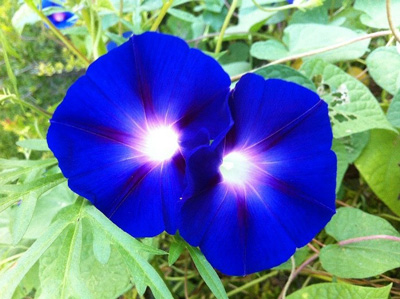
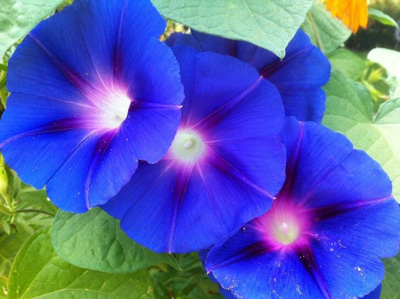
I cannot positively identify the cultivars shown here, but all are easy to grow here in Texas.
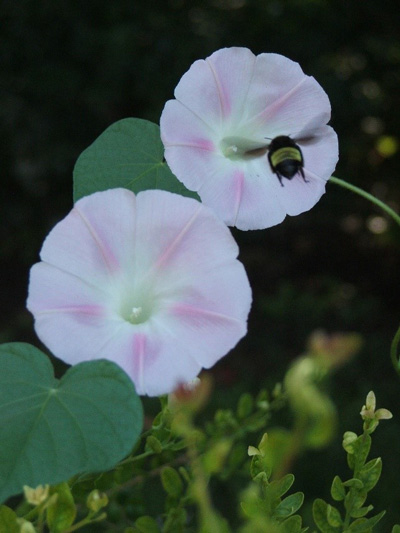
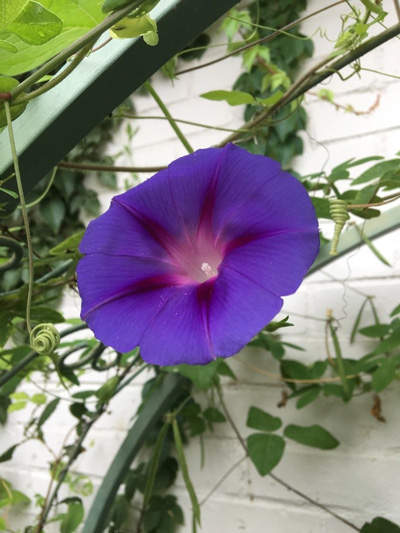
There are a ridiculous number of Morning Glories (Ipomea sp.) in this world, somewhere between 1,000 and 9,000 species, depending upon whether you are a lumper or a splitter. On top of that, they have been cultivated in Japan for at least a thousand years, so hundreds of different cultivars exist. (Most were developed from one of three species: Ipomea nil, I. purpurea, and I. tricolor. One of my favorite horticultural quirks is that many plants now marketed in the US as “Japanese Morning Glories” are actually native to Mesoamerica.)
Old reliables like ‘Heavenly Blue’ and ‘Grandpa Ott’ are still around, but now have to compete with new varieties that feature spots, speckles, stripes, picotee edges, and screaming bright colors. While some descriptions say things like, “delicate climbing flower to 6 ft. tall,” 10 to 15 ft. in height is more accurate.

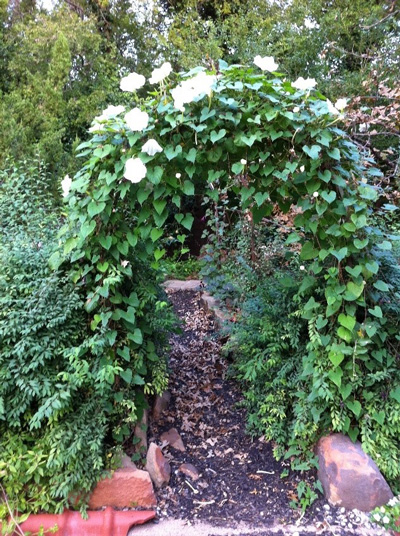
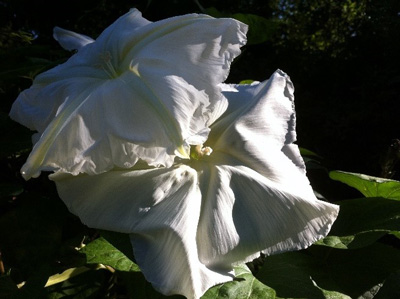
Moonflower
Perhaps a dozen plants share the name “Moonflower,” (“Joseph’s Coat” has the same problem). Here I am referring to Ipomea alba, a robust vine (to 20 ft.) with pure white blooms, complete with intricate pleating, that measure 6-8 in. across. Easily grown in Texas gardens, the flowering and the subsequent intoxicating fragrance occurs during the night and early morning … which are my favorite times to visit Texas gardens during summer anyway.
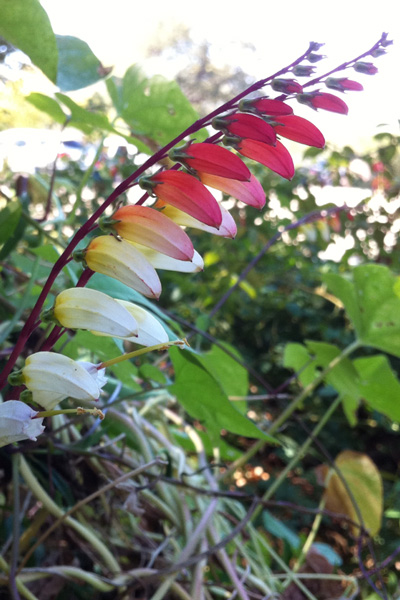
Spanish Flag
Yet another easy to grow Ipomea (this time I. lobata), the lovely flower spikes radiating from white on bottom to red on top make this plant almost irresistible.
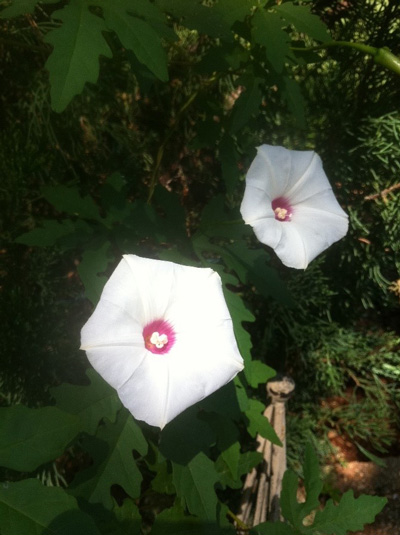
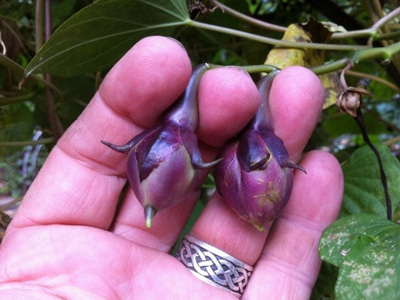

Alamo Vine
For the life of me, I cannot figure out why this isn’t in every garden from Amarillo to Orange. First off, it’s native to Texas. Second, the thing is one of the most gorgeous vines you’ll ever grow. Third, the thing is downright interesting.
Lovely palmate leaves cover the slender vine until it throws off gorgeous four-inch-wide, red-throated white blossoms. Then the plump purple fruits adorn the plant, until they eventually dry into crunchy brown ornaments that remind me of little basketballs that have opened up and peeled back the sections to reveal a smaller soccer ball within. Save those seeds … perhaps one of the all-time best pass-along plants around.

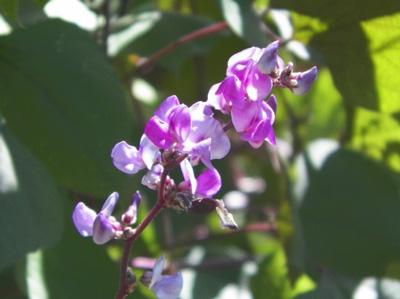
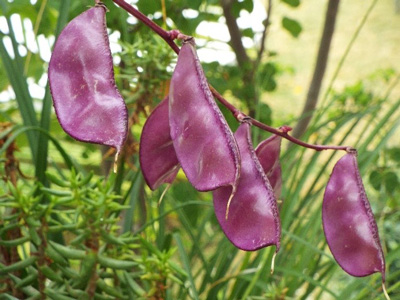
Hyacinth Vine
I remember the first time I saw this plant. Richard and Robin Hartman had it growing beside their Fort Worth place back when their company, the Plant People, was just getting started (maybe 1988 or so). The sheer robustness of the plant blew me away.
Hyacinth Bean (Lablab purpurea) is one big, beautiful bean. This fast-growing annual vine is grown for its verdant foliage, two-toned scented blossoms, and particularly pretty purple pods. This is an ornamental bean not an edible one, but it delivers plenty of eye candy. A dozen seeds planted a few inches apart against a fence will provide a 20-foot-wide tidal wave of fragrant fun all summer long.
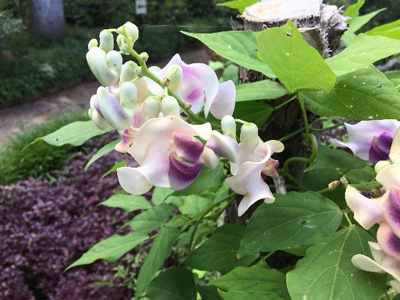
Corkscrew Vine
First off, we are talking an absolute gourmet plant here, top to bottom, but the main course is definitely the fragrance. As sumptuous as those delicate, curly-petalled blossoms are, with delicious colors you kind of have to see to believe, the scent will make you weak in the knees and likely flash back to your first childhood crush.
So far, everything has been easy-peasy-lemon-squeezy to grow in Texas … not so here. Cochliasanthus carcalla, as she’s now known to botanists, can be on the fussy side, so superb soil and careful culture are required. Ironically, this fancy member of the bean family was introduced to me by John Begnaud out in San Angelo, an area of Texas not particularly known for horticultural ease. I figured if he could grow it, so could I. Turns out I may well have underestimated John’s horticultural prowess, as out of 20 rather expensive seeds, I coaxed only three plants all the way to flower. At one point, I considered hiring some nuns to hold a candle-lit novena in the garden.
To add insult, a little internet research tells me that this thing is so easy to grow in California that it’s actually considered an invasive species there … apparently growing like Kudzu and spewing seeds like a machine gun. All I can say to that is if it was that easy; you’d see more of it around the Lone Star State.
Maybe it’s time to buy ole Begnaud a beer … and find out which nuns he used.
The snow is already melting. Time to make a few plans for the garden … leave a little room for experiments. Time to dream … and remember that nothing is so beautiful, so perfect, so magnificent as next year’s garden.
Peace & Love, Steven
_______________________________________________________________
I need a road trip! Let me know if you’d like me to come and speak to your group sometime. I’m low maintenance, flexible, and you know I like to go just about anywhere. No city too big; no town too small. Just send me an e-mail at stevenchamblee@yahoo.com and we’ll work something out.
